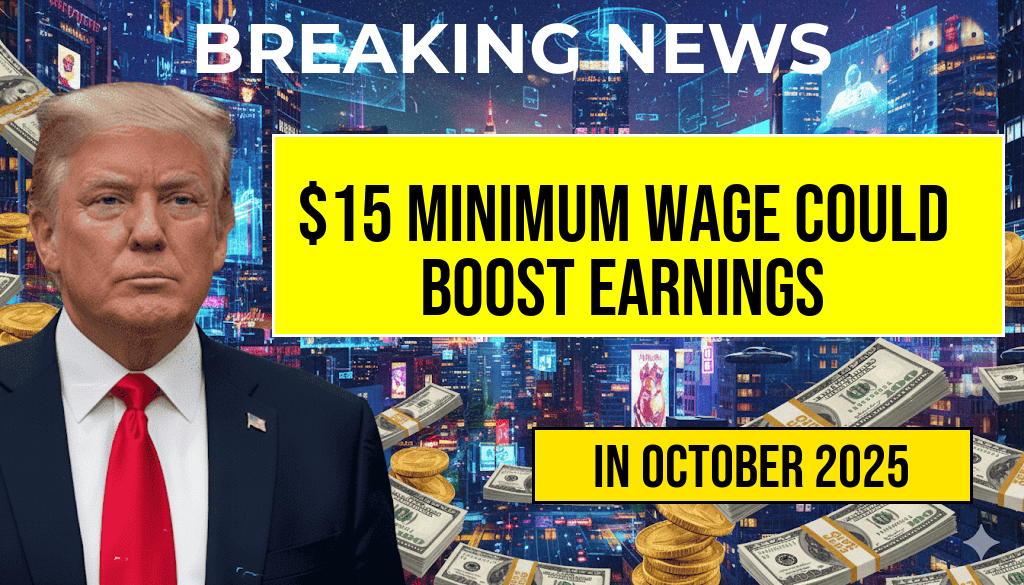A recent study suggests that raising the federal minimum wage to $15 an hour could significantly impact millions of American workers, potentially increasing annual earnings by an average of $3,300 for approximately 32 million employees. This policy shift could reshape the economic landscape for low-wage earners, providing them with a more sustainable income amid rising living costs. While advocates cite improved quality of life and reduced poverty, critics raise concerns about potential employment effects and increased business costs. The analysis underscores the broad implications of a federal minimum wage increase, highlighting both the potential benefits and challenges faced by the economy and workforce.
Understanding the Potential Economic Impact of a $15 Minimum Wage
Projected Earnings Boost for Millions of Workers
The study, conducted by an independent economic research firm, estimates that a federally mandated minimum wage of $15 per hour could benefit around 32 million workers. These employees currently earn less than the proposed threshold and would see a considerable increase in their annual income. On average, the earnings for this group could rise by approximately $3,300 per year, translating to a boost in household budgets and increased consumer spending. This level of income growth could help address economic disparities and contribute to broader economic activity.
Regional Variations and Cost of Living Considerations
While the national figure offers a broad perspective, regional differences in living costs mean the actual impact would vary across states and cities. Areas with higher costs of living, such as San Francisco or New York, may see more pronounced benefits, whereas regions with lower living expenses might experience less dramatic changes. Some economic analysts caution that uniform federal increases could have unintended consequences in certain markets, including potential shifts in employment or business expenses.
Potential Benefits and Criticisms
| Advantages | Challenges |
|---|---|
| Reduced poverty levels among low-wage workers | Possible increased operational costs for small businesses |
| Enhanced economic stability for millions of families | Potential reductions in employment opportunities or hours for some workers |
| Stimulated consumer spending and economic growth | Risk of inflationary pressures in certain sectors |
Economic and Political Context
Historical Attempts and Policy Debates
The push for a federal minimum wage increase has gained momentum over recent years, with several states already implementing higher minimums. The Biden administration has championed raising the federal baseline, citing the need to keep pace with inflation and ensure fair compensation. Proponents argue that a $15 minimum wage aligns with the living wage standards in many urban centers and can serve as a catalyst for economic equity.
Opposing Views and Economic Concerns
Critics, including some business associations and economists, warn that such a substantial hike could lead to job reductions, particularly for younger or less-skilled workers. They contend that increased labor costs might prompt employers to cut hours, automate jobs, or relocate operations to regions with lower wages. The Congressional Budget Office (CBO) has previously analyzed similar proposals, indicating mixed effects on employment levels.
Policy Implementation and Future Outlook
Implementation of a $15 federal minimum wage would require legislative action, potentially facing opposition in Congress. Some states and municipalities have already adopted higher minimum wages, providing case studies on real-world impacts. Ongoing research and data collection will be crucial to monitor how such a policy affects employment, inflation, and overall economic health.
Additional Resources and References
- Wikipedia: Minimum Wage
- Forbes: What Every Worker Should Know About the Federal Minimum Wage
- Congressional Budget Office Report on Minimum Wage Increase
Frequently Asked Questions
What is the proposed increase in the federal minimum wage?
The proposed increase is to raise the federal minimum wage to fifteen dollars per hour.
How many workers could benefit from this minimum wage increase?
This increase could benefit approximately thirty-two million workers across the United States.
What is the estimated annual earnings increase for workers due to this wage hike?
Workers could see an increase of about three thousand three hundred dollars in their annual earnings.
How does the wage increase impact low-income workers?
The minimum wage increase aims to significantly boost income levels for low-income workers and reduce financial hardships.
What is the significance of this study’s findings?
The study highlights the potential economic benefits of raising the federal minimum wage, including increased earnings and improved living standards for millions of workers.

Leave a Reply